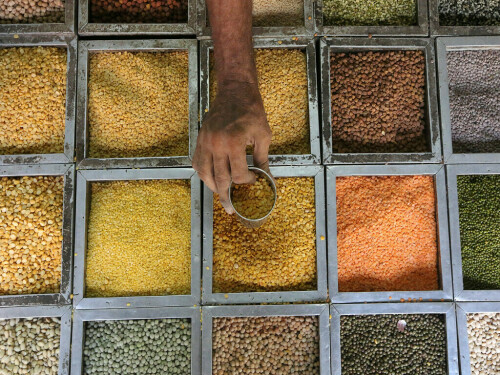Global Food Prices Rise in April
The United Nations’ Food and Agriculture Organization (FAO) reported that global food commodity prices experienced an uptick in April. This increase was primarily fueled by higher prices for cereals, meat, and dairy products, which offset declines in sugar and vegetable oils.
The FAO Food Price Index, which monitors monthly fluctuations in a basket of globally traded food commodities, averaged 128.3 points in April. This figure represents a 1% increase compared to the March estimate of 127.1 points.
The April figure also showed a 7.6% rise from the corresponding month last year. However, it remains 19.9% lower than the peak recorded in March 2022, which followed Russia’s full-scale invasion of Ukraine.
The FAO’s price index for cereals increased by 1.2% from March. This was attributed to a slight increase in wheat prices due to tighter exports from Russia, a rise in rice prices driven by stronger demand, and tighter corn stocks in the United States.
Currency Fluctuations and Tariff Policies
The FAO noted that variations in currency values had an impact on price movements in global markets, and adjustments to tariff policies contributed to market uncertainty.
Despite the increase in April, the cereal price index remained 0.5% below its level from a year earlier.
The FAO’s meat price index also contributed to the rise in overall food prices, increasing by 3.2% last month. This increase was mainly driven by higher pig meat prices and robust import demand for bovine meat.
The dairy price index saw a substantial increase of 2.4% in April, marking a 22.9% jump compared to the previous year. Butter prices reached record highs due to declining inventories in Europe.
In contrast, the FAO’s vegetable oil price index decreased by 2.3% last month, primarily due to a significant drop in palm oil prices. The sugar price index also fell by 3.5% amid concerns about the uncertain global economic outlook.
In a separate report on cereals, the FAO maintained its forecast for world wheat production in 2025 at 795 million metric tons, which is consistent with 2024 levels.
The agency made a slight downward adjustment to its estimate for global cereal production in 2024, reducing it to 2.848 billion tons from the previous estimate of 2.849 billion tons.



Comments (0)
No comments yet. Be the first to comment!
Leave a Comment